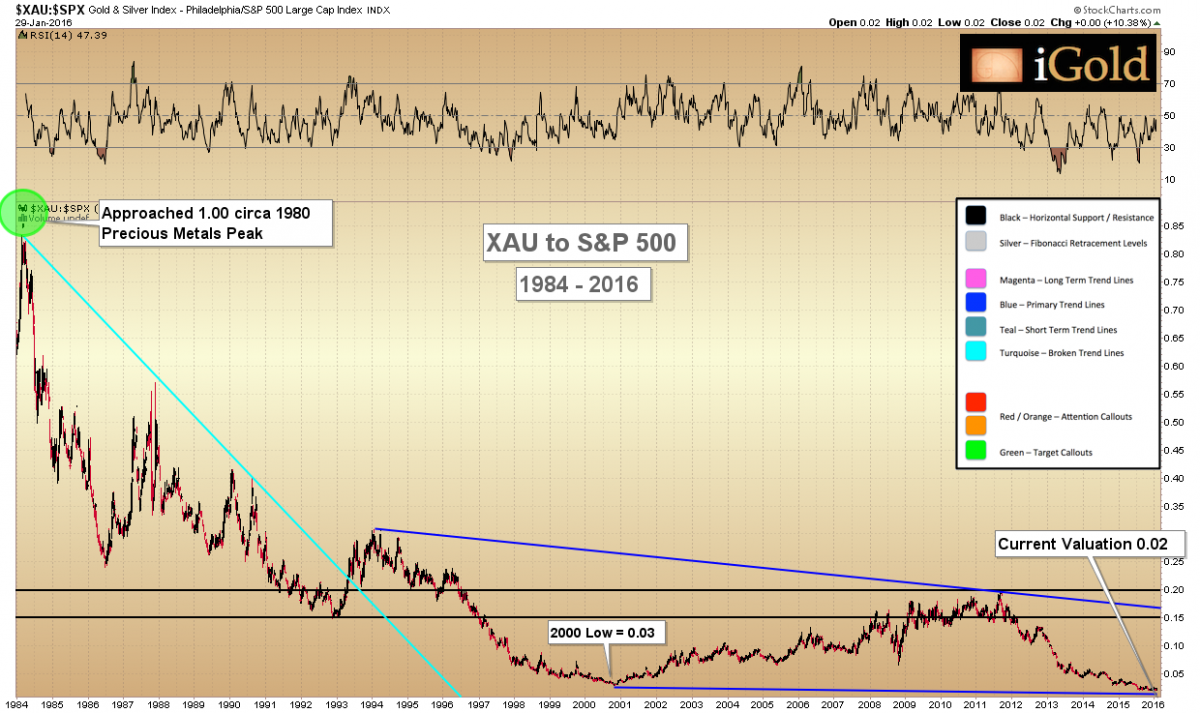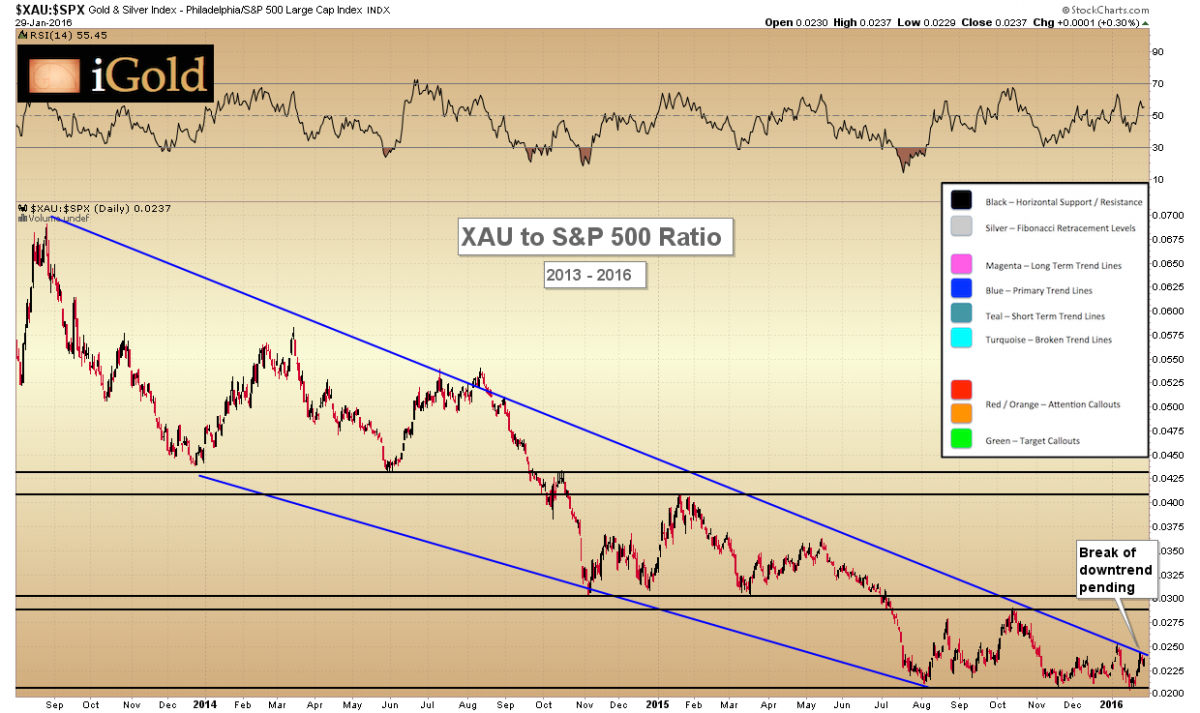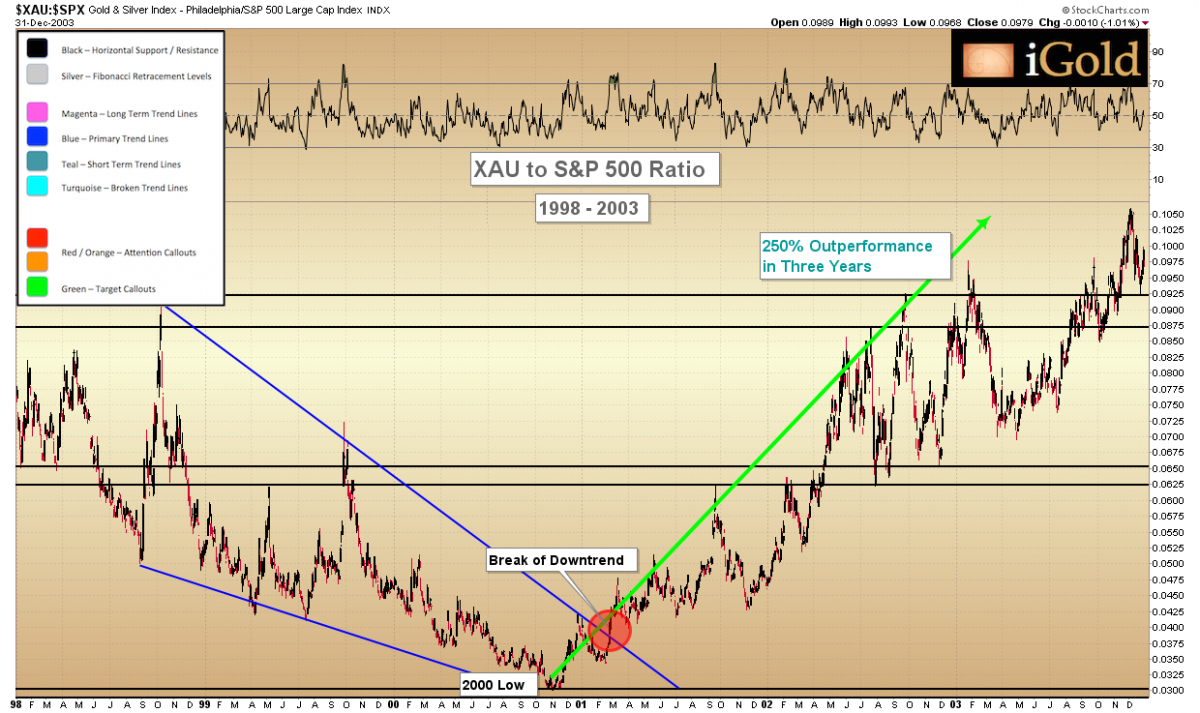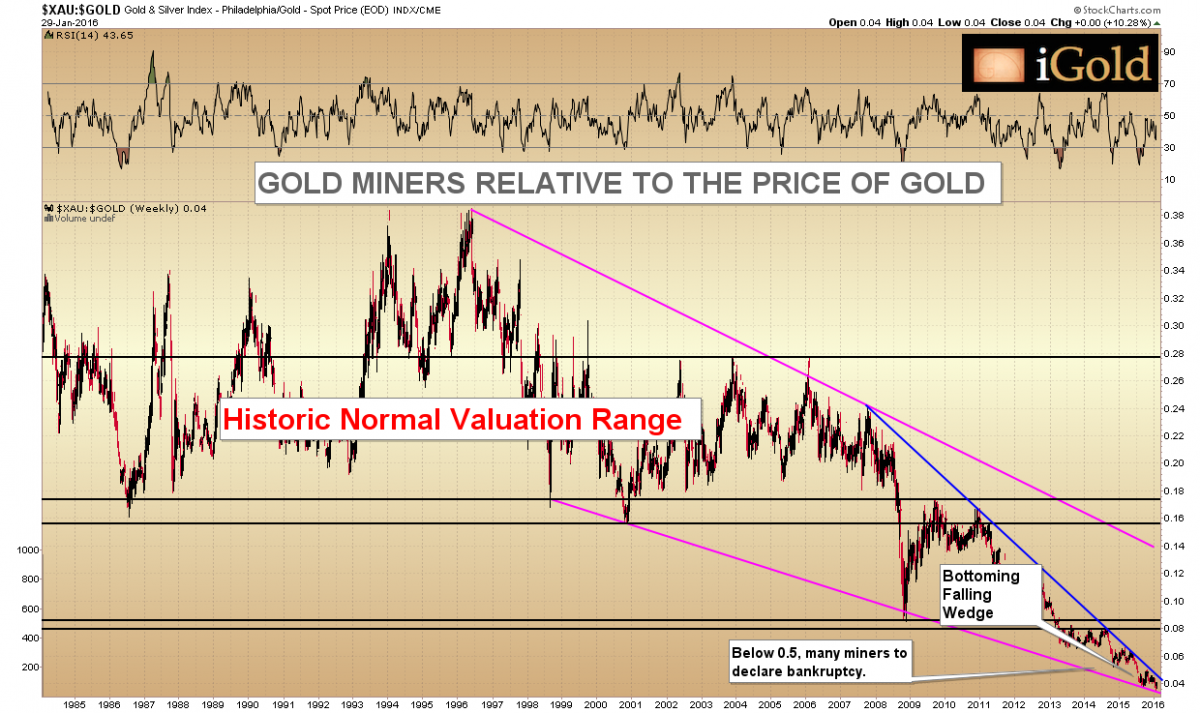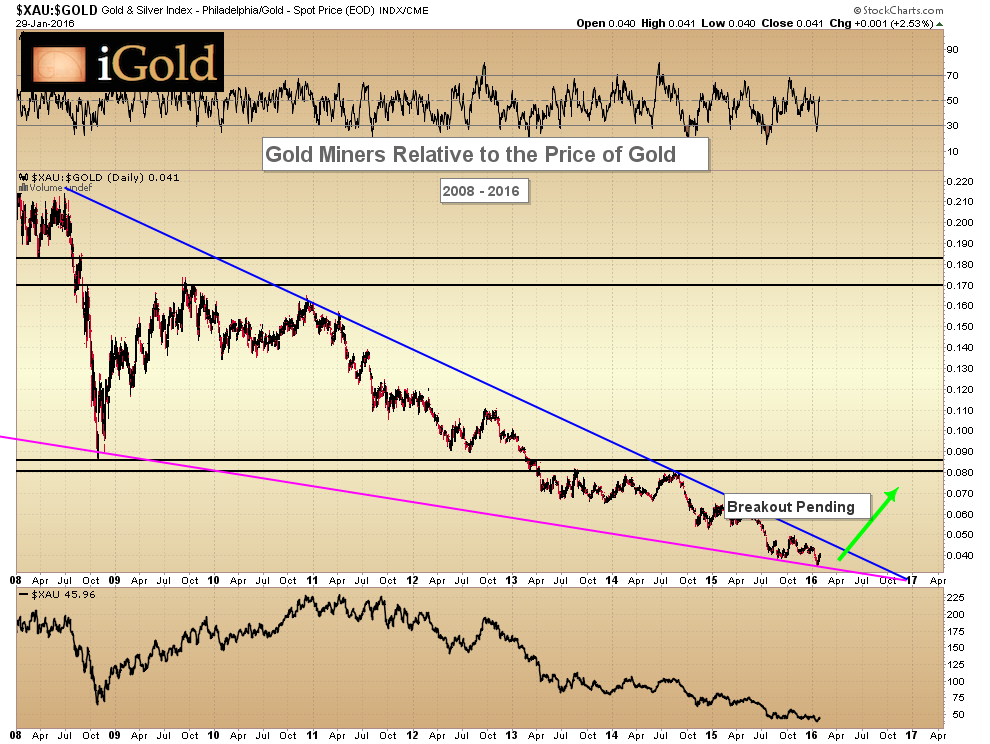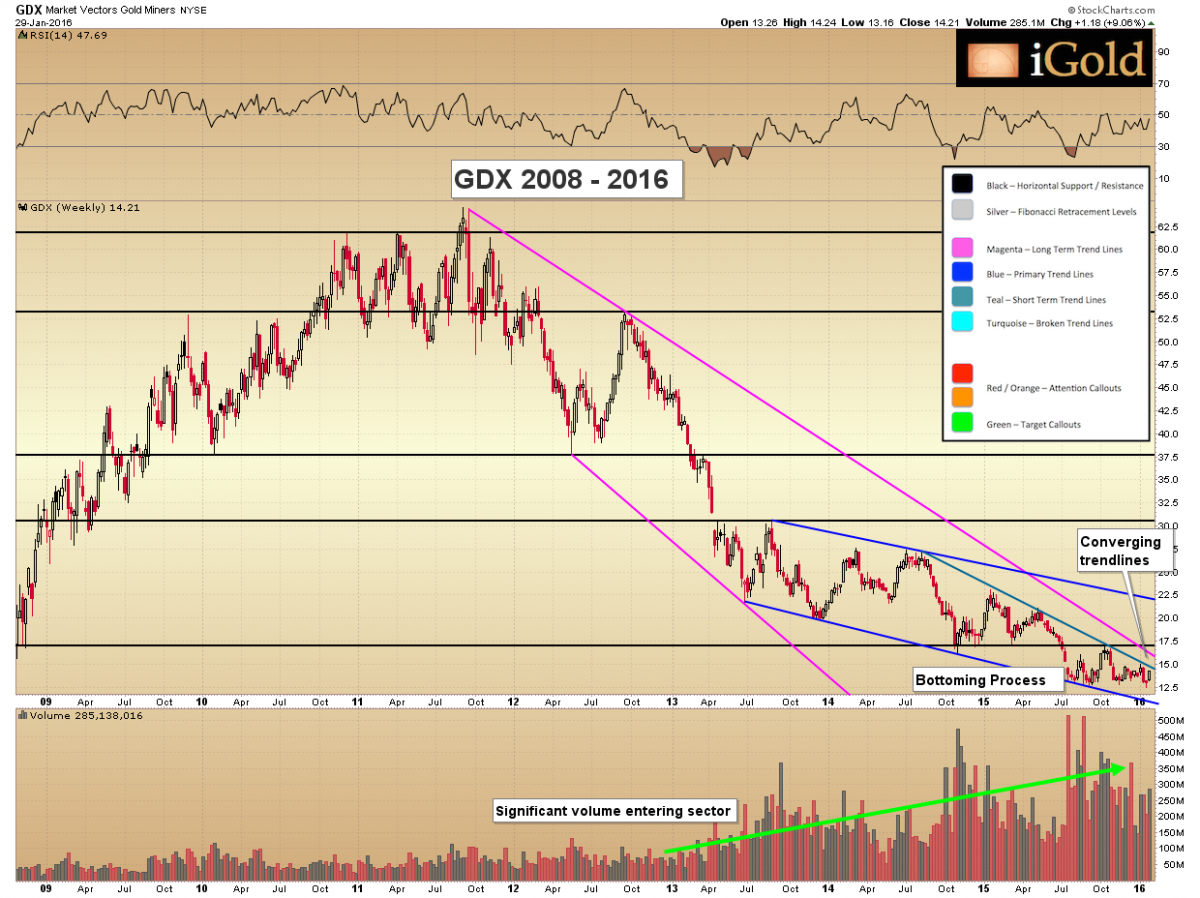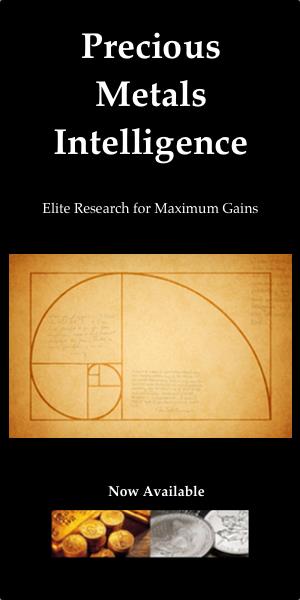The Trade of the Decade
 Our trade of the decade is to go long only the highest quality gold and silver mining companies, and to short the broad S&P 500 Index. By several important valuation metrics, these indices are at historic extremes. When focusing on recent patterns, we are seeing early warning indicators that the trends in the stock market and the gold sector are soon to change, if they have not done so already.
Our trade of the decade is to go long only the highest quality gold and silver mining companies, and to short the broad S&P 500 Index. By several important valuation metrics, these indices are at historic extremes. When focusing on recent patterns, we are seeing early warning indicators that the trends in the stock market and the gold sector are soon to change, if they have not done so already.
We begin by looking at the ratio of the S&P 500 compared to the XAU Gold and Silver Mining Index. This ratio tells us how many shares of each company in the S&P 500 are required to purchase one share in each company from the XAU Index.
Below we look at data dating to the XAU's inception in 1984. Important points to note are as follows:
- At the last precious metals peak in September 2011, with the XAU trading at 230 and the S&P 500 at 1150, the ratio stood at nearly 0.2. In other words, each share of the S&P bought you 5 shares in the XAU.
- Today with the XAU at 45 and the S&P 500 at 1940, that ratio stands at just 0.02. In other words, each share of the same S&P now buys you 50 shares in the XAU miners.
- Although data for the XAU only goes back to 1984, when we integrate data from the nearly identical Barron's Gold Mining Index (which goes back over 70 years), we can see that the ratio approached 1 to 1 near the 1980 gold peak, with the XAU trading at 120 and the S&P at exactly the same price.
- The takeaway is that there is historical valuation precedent for the S&P 500 and the XAU index to be trading at parity at a precious metals peak. At just 0.02 now, this calls for a 50-fold (5,000%) revaluation of the precious metals miners higher to reach parity with the S&P 500 before we can consider the precious metals to have peaked. Note that this could happen through any combination of the mining companies rising and/or the broad stock market falling, but the revaluation as to purchasing power will be the same -- 5,000% -- no matter how the ratio reverts.
Zooming in on the ratio for the last three years, we get a clearer picture of when the first stages of this revaluation will occur. Note the clearly defined down channel that has been in place during the last few years of the decline, which is currently making another attempt at a breakout.
Also, note that by falling from 0.06 to 0.02 in the last two years, we have seen an average decrease in the ratio of 0.02 per year. This rate of decline cannot continue, or else by the beginning of 2017, the ratio will hit zero (0) as all mines worldwide shut down with all gold miners declaring bankruptcy.
Stein's Law says: "That which cannot continue forever will one day stop." Such will be the case for the decline in precious metals miners relative to the S&P 500. And by projecting the current chart through the end of 2016, we can say with a high degree of confidence that this will be the year that the downtrend breaks.
What Happened During the Last Bottom?
Let us turn back to the years 1998 - 2003 for the last major bottom in the XAU / S&P 500 ratio to see what a potential bottom may look like. Of course, this was at the end of a much longer bear market, lasting nearly 20 years. Yet the valuation of precious metals miners was actually better in 2000 than it is today, as our ratio bottomed at 0.03 then compared to only 0.02 today. Remember, that 0.01 difference represents a 33% lower valuation today.
Above we can see that after the low was put in place in 2000 and the downtrend broke, the ratio did not spend much time hovering at the lows. This makes sense when we consider that precious metals and broad stocks are typically counter cyclical, and that a new downtrend in one often is the fuel for an uptrend in another. Please see our last article for a technical look at the new trend being observed in the US stock market (http://www.gold-eagle.com/article/us-stock-market-breaks-long-term-uptrend).
Indeed, after the 2000 low, the XAU outperformed the S&P 500 by 250% within three years, reaching 0.105 from the low of 0.03.
Remember that currently the XAU is valued even more poorly than in 2000, and thus, the upcoming revaluation may happen quicker than this historic example.
Gold Miners Relative to Gold
Not only are we seeing generational lows of precious metals miners relative to the US stock market, but we are entering the final phase of the miners being valued at historic lows versus the very commodity they produce -- gold.
Here we provide an updated look at our long-term valuation metric for the XAU compared to gold; in other words, how many ounces of gold are required to buy one share in each major gold miner.
Prior to the crash of 2008, this ratio had a normal range of 0.16 - 0.28. Today the ratio has fallen all the way to 0.04. For mining companies to be valued properly relative to their product, we would need to see a 450% relative gain in their share prices with no increase in gold. If the price of gold were to rise 50%, this revaluation would multiply and the miners should see a 675% increase during the same timeframe.
Again, this is the valuation model that held for multiple decades between gold above ground and gold below ground.
Zooming in on the price action since the crash of 2008 reveals a well-defined bottoming wedge pattern. Such is typical of either a commodity or a ratio that has suffered a multi-year decline, and is then pending a major trend change.
Note also that from the 2010 high of 0.17 to the current level of 0.04, the ratio has lost over 0.02 per year. Again, mathematically, such a decline cannot continue, or else by 2018 gold will be worth zero compared to gold held in vaults.
Again, that which cannot continue forever will one day stop.
As contrarians, we like to invest in things which are universally hated at the moment, yet universally loved throughout history.
Gold miners are now universally hated compared to major international stocks, and even universally hated relative to their own primary asset. Yet the search for gold is an integral part of human civilization itself.
We could not imagine a more powerful investment scenario.
An Update on the Mining Sector Bottom
Switching our focus to the GDX fund for analysis of volume data, we continue to see a market grinding lower toward a convergence of several important downtrend lines. Once these trend lines are decisively broken at 14.5 and 16.5 respectively, we will have a strong indication that a final low has been put into place. We want to wait to see these levels taken out before establishing long positions.
Looking at the volume pattern below the primary chart, we can see a tremendous surge of interest entering the sector as prices have moved lower. This is one of the strongest signals of major new funds accumulating shares, and tends to precipitate price bottoms. Note the average volume is nearly three times what it was compared to the 2011 highs.
Executive Summary
Valuations for precious metals miners are at generational lows relative to both stocks and gold itself. The current rates of decline cannot continue beyond 2016. Gold mining is one of the oldest industries in human civilization, and we have decades of data to properly value the companies relative to their metals and to other industries. The market will revert to its mean over the next decade, and fortunes will be made by those who own high-quality companies that are able to withstand any further weakness in the metals. Ultimately new options in business and beyond will exist for those able to recognize the opportunity.

